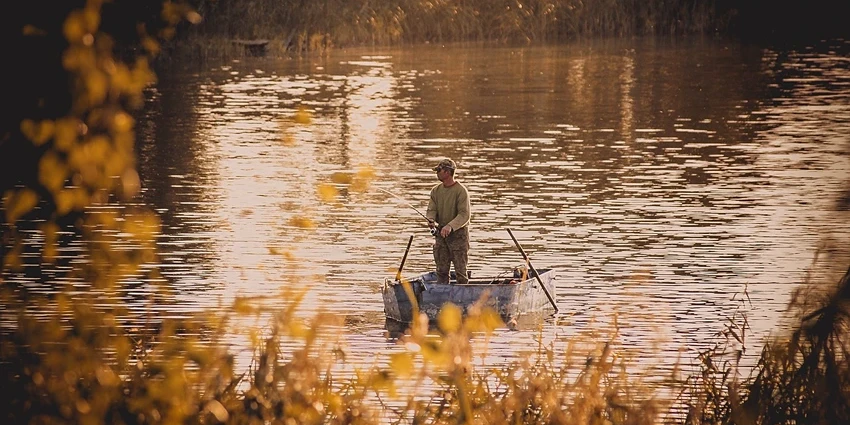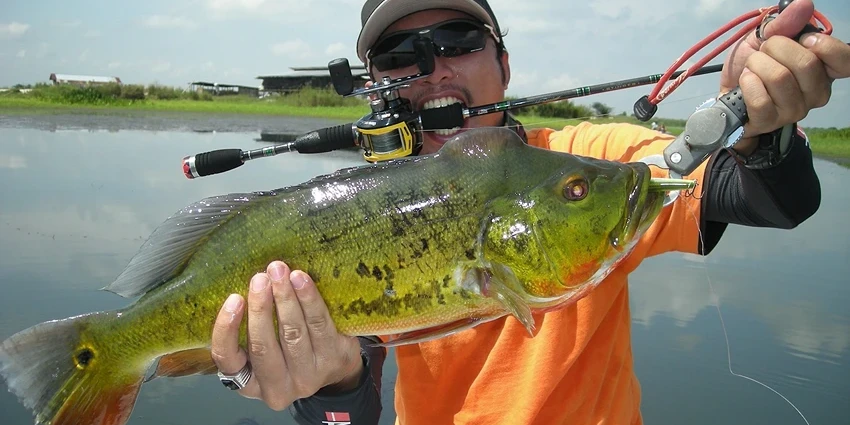All products were chosen independently by our editorial team. This review contains affiliate links and we may receive a commission for purchases made. Please read our affiliates FAQ page to find out more.
Saltwater fishing, an activity deeply ingrained in our cultural and ecological fabric, stands at a crossroads today. With the oceans facing unprecedented challenges, the need for sustainable practices in saltwater angling has never been more pressing. This article delves into the various facets of saltwater fishing conservation and angling methods, aiming to enlighten and inspire anglers and conservationists alike.
Historical Perspective of Saltwater Angling
Saltwater fishing, a practice as old as civilization itself, has evolved significantly over the centuries. From rudimentary tools to sophisticated gear, the journey of saltwater angling mirrors humanity’s relationship with the sea.
Evolution of Techniques
- Ancient Methods: Initially, fishing was about survival, using simple tools like spears and nets.
- Industrial Era: The advent of motorized boats and advanced gear changed the dynamics, increasing catch rates dramatically.
- Modern Times: Today, we see a blend of traditional wisdom and modern technology shaping angling practices.
Impact on Marine Ecosystems
- Overfishing: Historical practices have led to the depletion of certain fish populations.
- Habitat Destruction: Certain fishing methods have caused irreversible damage to marine habitats.
Saltwater Angling Techniques and Conservation
The methods employed in saltwater fishing play a crucial role in conservation. Each technique has its own set of implications for marine life.
Popular Saltwater Angling Methods
- Trolling: A method where lines with baited hooks are drawn through the water, popular for species like tuna and marlin.
- Fly Fishing: An artful technique, increasingly being adapted for saltwater, targeting species like tarpon and bonefish.
Role in Marine Conservation
- Selective Fishing: Techniques like fly fishing are more species-selective, reducing bycatch.
- Habitat-Friendly Practices: Avoiding methods that harm the seabed and coral reefs.
Saltwater Fishing Gear and Sustainable Practices
The gear used in saltwater fishing has a direct impact on the health of marine ecosystems. Utilizing sustainable gear, such as eco-friendly tackle and the best fish finders, can significantly reduce your ecological footprint.
Types of Gear
- Rods and Reels: The choice of rod and reel can determine the efficiency and impact of the catch.
- Hooks and Lines: Innovations like circle hooks reduce mortality rates in catch-and-release fishing.
Sustainable Gear Choices
- Biodegradable Materials: Using gear that minimizes environmental impact.
- Eco-Friendly Tackle: Tackle that does not contribute to marine pollution.

Saltwater Fishing Regulations and Policies
Regulations play a pivotal role in ensuring sustainable fishing practices.
Overview of Current Regulations
- Catch Limits: Imposing limits on the size and number of catches to prevent overfishing.
- Protected Areas: Establishing marine reserves where fishing is restricted or prohibited.
- Fishing Licenses: Requiring anglers to obtain fishing licenses to regulate and manage fishing activities.
Impact of Policies
- Conservation Successes: Policies have led to the recovery of certain fish populations.
- Challenges: Balancing the needs of anglers with conservation goals remains a challenge.
Case Studies: Success Stories in Saltwater Fishing Conservation
Examining real-world examples provides valuable insights into effective conservation strategies.
Examples of Successful Efforts
- Community-Led Initiatives: Local fishing communities implementing sustainable practices.
- Policy-Driven Recovery: Regions where stringent policies have revived fish populations.
Lessons Learned
- Community Involvement: The critical role of angler participation in conservation.
- Adaptive Management: The need for flexible, science-based management strategies.
Register for our latest in-depth reviews and product round-ups from the experts
Enter your email address below to receive our twice monthly reviews emails.
By entering your details, you are agreeing to our terms and conditions and privacy policy. You can unsubscribe at any time.
Technological Advancements in Saltwater Angling
Technology is reshaping the future of saltwater fishing, both in terms of the angling experience and conservation efforts.
Role in Enhancing Conservation
- Data Collection: Advanced tools for monitoring fish populations and habitats.
- Sustainable Gear Technology: Innovations leading to more selective and less harmful fishing gear.
Future Trends
- AI and Machine Learning: Potential applications in fish stock assessment and habitat monitoring.
- Eco-Friendly Boating Solutions: Advances in boat design and propulsion to minimize environmental impact.
The Role of Anglers in Marine Conservation
Anglers are not just participants in saltwater fishing; they are stewards of the marine environment.
Community Involvement
- Citizen Science: Anglers contributing to data collection and research.
- Conservation Advocacy: Angler-led initiatives to promote sustainable fishing practices.
Educating Anglers
- Workshops and Seminars: Programs to educate anglers about sustainable practices.
- Youth Engagement: Encouraging the next generation of anglers to adopt conservation-minded approaches.
Challenges and Solutions in Saltwater Fishing Conservation
Despite significant progress, challenges remain in the realm of saltwater fishing conservation.
Current Challenges
- Climate Change: Impacting fish populations and habitats.
- Enforcement of Regulations: Ensuring compliance with fishing regulations and protected areas.
Potential Solutions
- Collaborative Management: Engaging all stakeholders in conservation efforts.
- Innovative Policy Making: Developing policies that are adaptable to changing environmental conditions.
Technological Advancements in Saltwater Angling
The integration of technology in saltwater fishing is not just enhancing the angling experience but also playing a pivotal role in conservation efforts.
Role in Enhancing Conservation
- Data Collection Tools: Advanced technologies like GPS and sonar are being used for precise tracking of fish movements and habitat mapping.
- Sustainable Gear Technology: Innovations in fishing gear are designed to minimize environmental impact, such as biodegradable fishing lines and eco-friendly lures.
Future Trends
- Artificial Intelligence (AI): AI is being explored for predictive analysis of fish population trends and habitat changes.
- Eco-Friendly Boating Solutions: Development of electric and solar-powered boats to reduce carbon footprint.

The Role of Anglers in Marine Conservation
Anglers are at the forefront of marine conservation, playing a crucial role in sustaining the health of our oceans.
Community Involvement
- Citizen Science Programs: Anglers participate in data collection, contributing to scientific research on fish populations and marine ecosystems.
- Conservation Advocacy: Angler-led initiatives are crucial in promoting sustainable fishing practices and marine conservation.
Educating Anglers
- Workshops and Seminars: Programs aimed at educating anglers about sustainable fishing practices and marine ecology.
- Youth Engagement: Initiatives to involve younger generations in conservation efforts, ensuring the future of sustainable angling.
Challenges and Solutions in Saltwater Fishing Conservation
Addressing the challenges in saltwater fishing conservation requires innovative and collaborative approaches.
Current Challenges
- Climate Change: The impact of climate change on marine ecosystems is altering fish behaviors and habitats.
- Enforcement of Regulations: Ensuring compliance with fishing regulations and protected areas remains a significant challenge.
Potential Solutions
- Collaborative Management: Involving all stakeholders, including anglers, conservationists, and policymakers, in developing sustainable fishing strategies.
- Innovative Policy Making: Creating adaptable policies that can respond to environmental changes and emerging challenges in marine conservation.
Frequently Asked Questions (FAQs)
Sustainable practices include using selective gear, adhering to catch limits, practicing catch and release, and avoiding fishing in protected areas.
Climate change can alter fish migration patterns, affect spawning seasons, and lead to habitat loss, impacting fish populations and angling practices.
Anglers contribute to conservation by participating in data collection, adhering to sustainable practices, and advocating for marine protection measures.
Technology helps in tracking fish populations, mapping habitats, and developing sustainable fishing gear and practices.
Challenges include monitoring vast ocean areas, ensuring angler compliance, and adapting regulations to changing environmental conditions.







